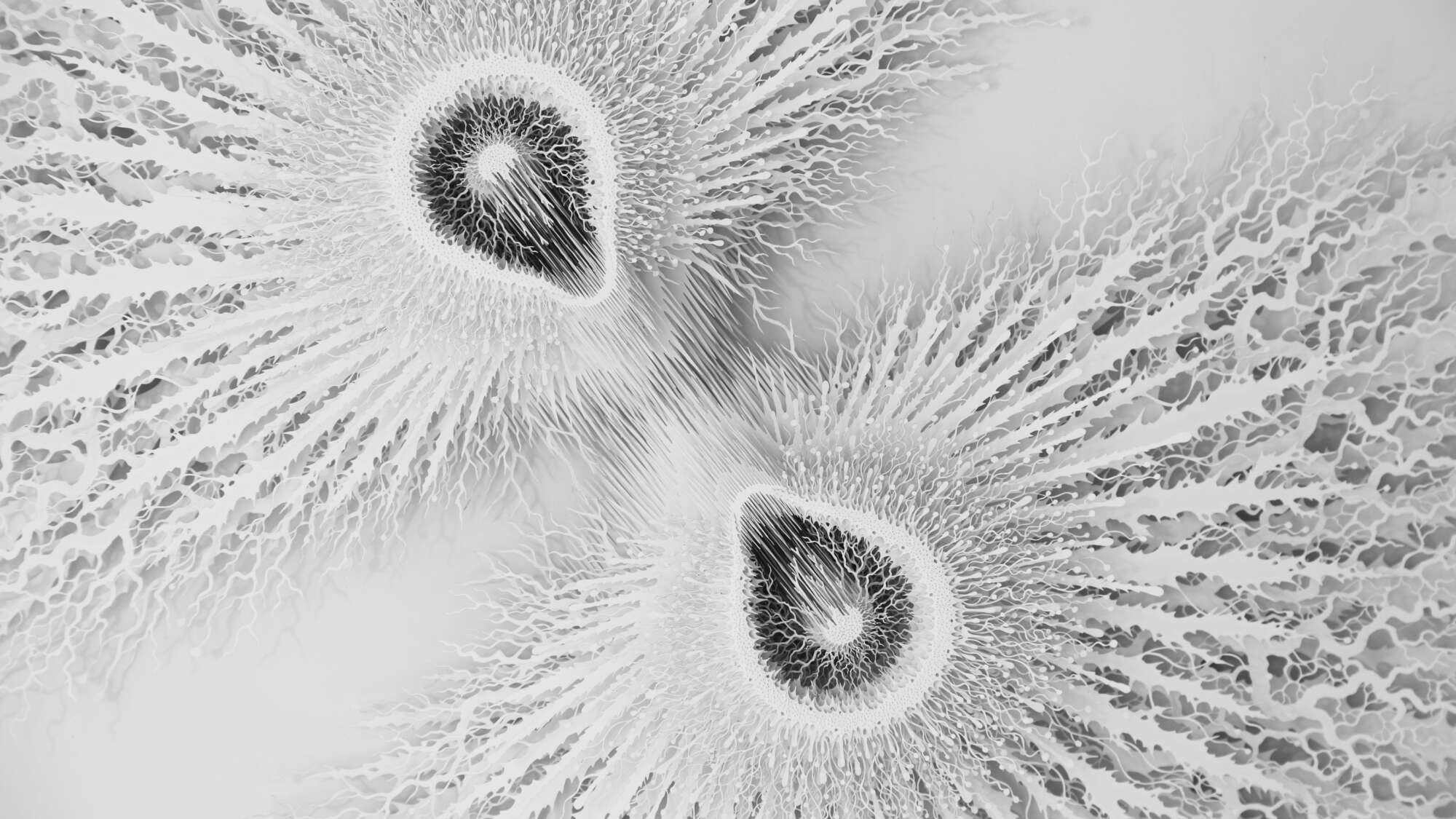Rogan Brown is an Anglo-Irish artist notable for his intricate paper sculptures that beautifully intertwine art and science. Drawing inspiration from the microscopic to the monumental – microbiology, botanical forms, geological structures, and marine ecosystems – Rogan meticulously handcrafts and laser-cuts complex three-dimensional artworks. His pieces surpass mere representation, merging scientific accuracy with surreal artistic flair.
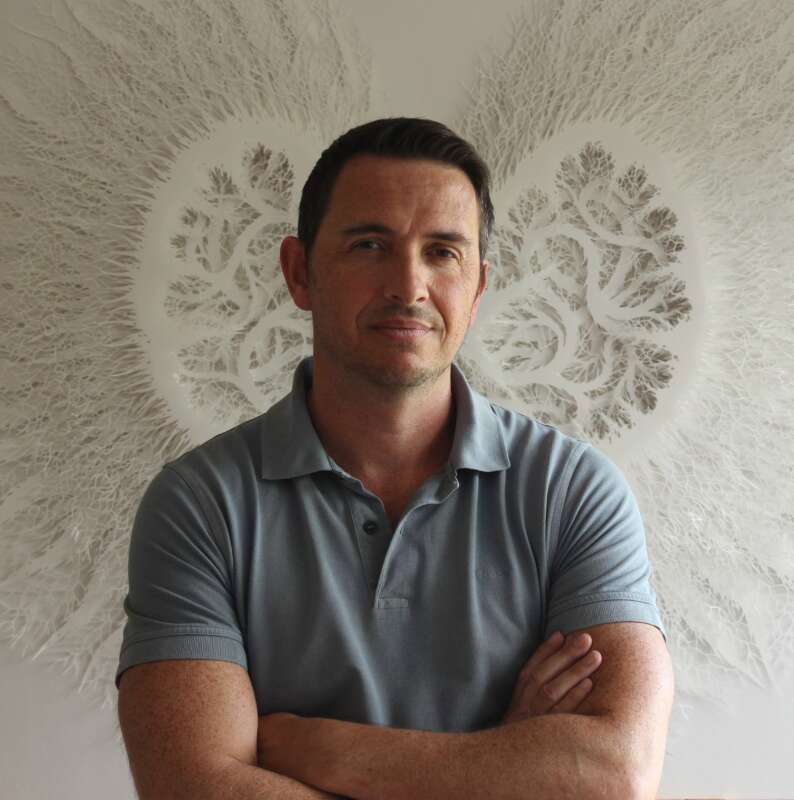
Rogan’s work has earned international acclaim with his sculptures permanently exhibited in science-themed venues like the Eden Project in Cornwall and the Wellcome Collection in London. Rogan’s art has graced the pages of notable publications such as American Scientist, Smithsonian magazine, and the CDC’s Emerging Infectious Diseases Journal. He is also featured in Lynn Gamwell’s seminal study, “Exploring the Invisible: Art, Science and Spirituality,” highlighting the deep historical relationship between art and science.
We were fortunate to have Rogan Brown generously share his time to answer a few questions for us.
The Interview
Q: What first drew you to combining elements of nature and science in your art? Can you trace your fascination with these themes to any specific events or influences in your early life?
Rogan: “From an early age, I was always captivated by the natural world. Growing up, I spent countless hours exploring woods, collecting leaves, feathers, rocks, observing insects; doing what we would now call “forest bathing”, which is still an important part of my daily life. But it was only much later when I went to live in a very wild, rural area of southern France that I began to engage with nature as an artistic subject and to understand that I was seeing that landscape and natural environment through the prism of science as well as art, as we all do in the modern world.”
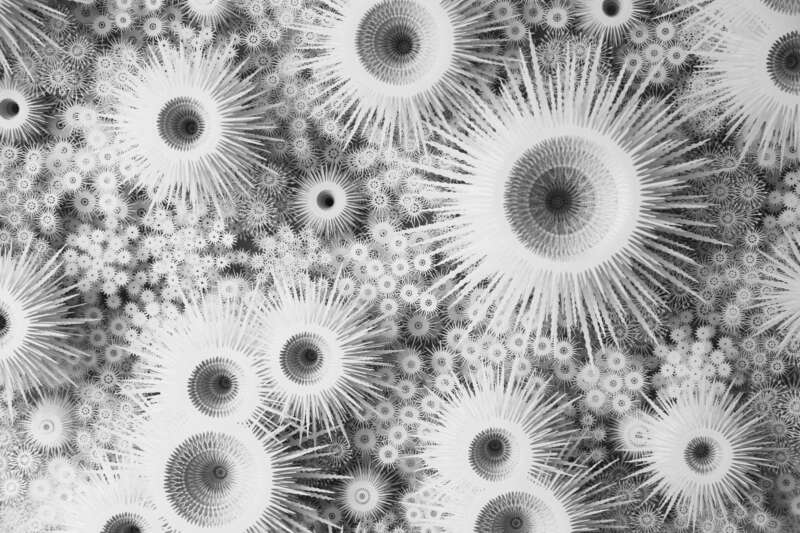
Q: What are some of the biggest challenges you face when creating your intricate sculptures?
Rogan: “One of the biggest challenges is the sheer amount of time and patience required. Although I use laser cutting machines each piece is still meticulously hand-drawn and hand-crafted, which can be incredibly time-consuming. Ensuring structural integrity in such delicate works is also a significant challenge; the sculptures need to be both intricate and sturdy. Additionally, translating complex scientific concepts into visually compelling art requires a deep understanding of both the science involved and the artistic techniques needed to represent them.”
Q: Of all the pieces you’ve created, do you have a favorite? If so, what makes it stand out to you personally?
Rogan: “It’s difficult to choose a favorite, as each piece represents a different aspect of my journey as an artist. However, “Outbreak” holds a special place in my heart. It’s a large-scale piece, completely hand-cut, inspired by bacterial colonies and the spread of viruses. This work is particularly meaningful to me because it encapsulates the fragility and resilience of life, themes that are central to my practice. It also explores the limitations of science and the dangers of scientific research. The reaction it has received from viewers, especially since the Covid outbreak, often invoking both wonder and introspection, makes it stand out.”
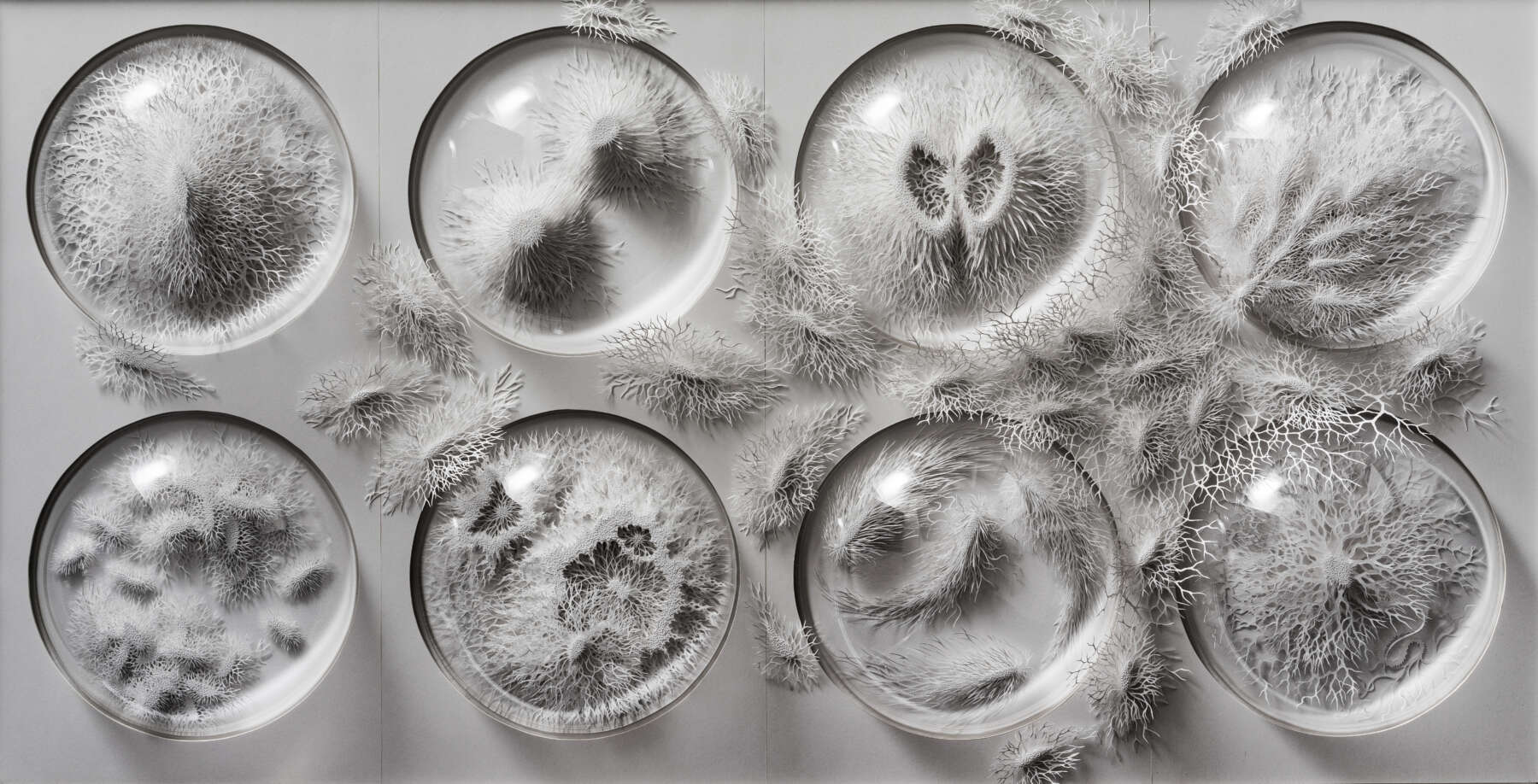
Q: How do you hope your work influences or impacts the viewer? Is there a particular message or feeling you aim to evoke through your art?
Rogan: “I hope my work encourages viewers to see the natural world with a sense of awe and respect. By highlighting the beauty and complexity of biological forms, I aim to foster a deeper appreciation for the unseen wonders of our environment. Our enemy is habit because it dulls us to the immensity of the natural world that surrounds us and that science reveals to us. Art can break us free of our habitual ways of seeing and remind us of our connection to the intricate patterns and processes that sustain life, prompting us to reflect on our relationship with nature and the impact of our actions on the environment.”
Q: How do you balance scientific accuracy and artistic expression in your work? Do you find one influences the other?
Rogan: “Balancing scientific accuracy and artistic expression is a dynamic and ongoing process. Artistic expression often requires abstraction and interpretation, working through visual metaphor to convey meaning. There are times when I take creative liberties to highlight certain features or to evoke particular emotions. Ultimately I am not a professional scientific illustrator but rather a fine artist interested in the emotional truth of our relationship to science and to nature. I explore how the untrained mind of the non-scientist engages with scientific concepts leading, inevitably, to the factual and the imaginary combining and merging.”
Q: What has been your most memorable exhibition or installation to date, and why?
Rogan: “My most recent exhibition is probably the most memorable because it was so unusual. I took part this year in a show in Paris at the Museum of Decorative Arts in the Louvre entitled “Sculpting the Senses” where I exhibited four artworks as part of avant-garde dress designer Iris Van Herpen’s retrospective career show. Like me Van Herpen is profoundly inspired by science and what it reveals to us of the natural world and she collaborates with both artists and scientists to create clothes that are really stunning biomorphic sculptures. Mixing art, science and haute couture is incredibly rare and it was a real privilege to collaborate with her.
The exhibition is now on a worldwide tour starting next month in the Queensland Art Gallery Museum of Modern Art, Brisbane, Australia (29 Jun – 7 Oct 2024), then the Art & Science Museum in Singapore (8 March – 3 August 2025) and finally the Kunsthal in Rotterdam (26 Sept 2025 – 22 Feb 2026).”
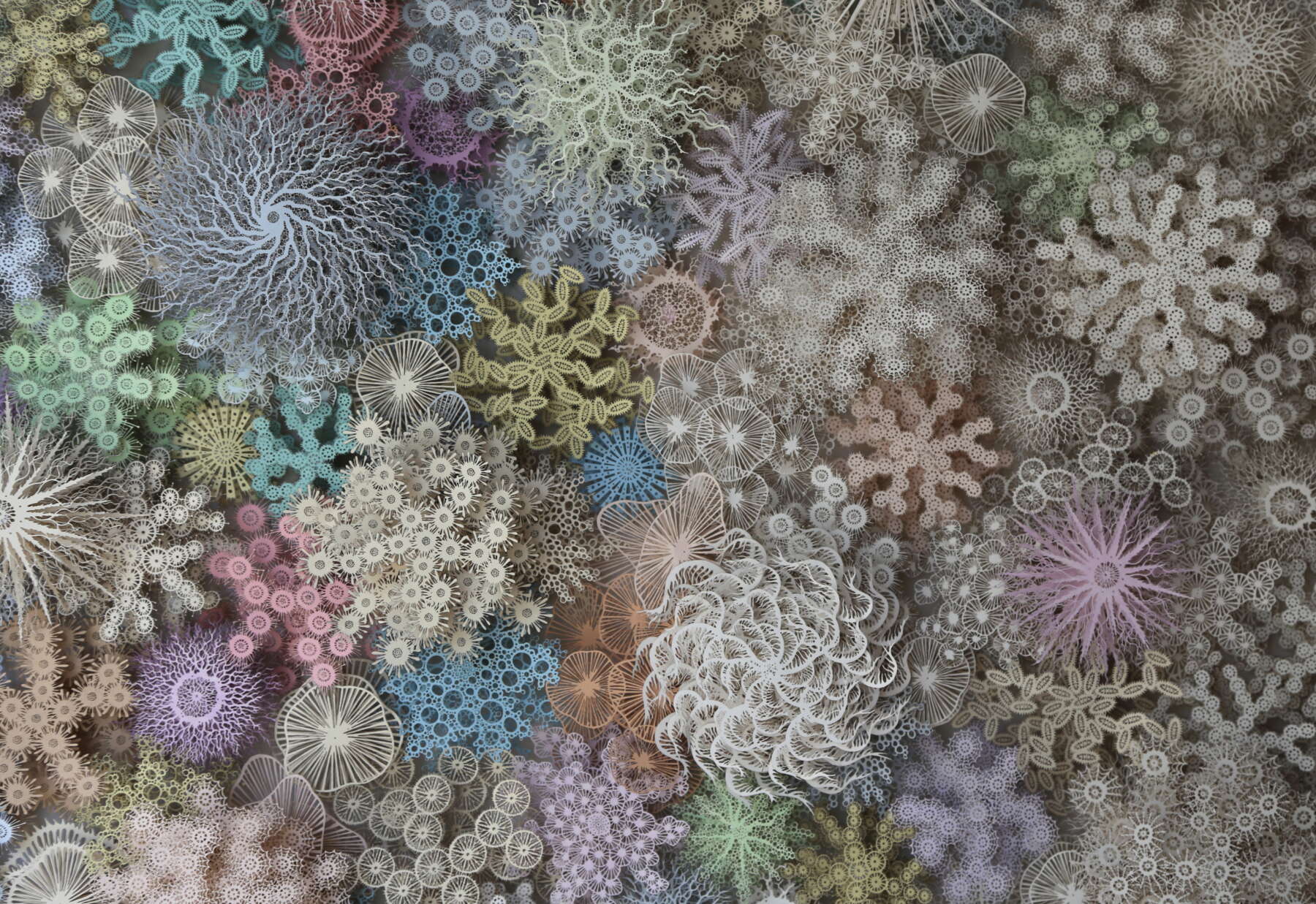
Q: Given the natural themes of your work, how do you approach issues of sustainability in your art practice?
Rogan: “Sustainability is a key consideration in my practice. I strive to use eco-friendly materials and processes whenever possible. For example, I often use recycled paper and non-toxic adhesives. Additionally, the themes of my work, which highlight the beauty and complexity of the natural world, inherently promote an ethos of conservation and environmental stewardship. By creating pieces that celebrate nature, I hope to inspire others to value and protect our planet.”
Q: Are there any new themes or techniques you are eager to explore in your future projects?
Rogan: “I’m particularly interested in exploring the concept of symbiosis and the interconnectedness of different life forms. This theme has profound implications for understanding ecological balance and the impact of human activity on natural systems. In terms of techniques, I’m experimenting with incorporating new materials and digital fabrication methods to push the boundaries of what’s possible with my intricate designs. These new directions will allow me to continue evolving my practice and explore new artistic frontiers.”
Q: How has your work as an artist impacted your personal views on nature and the environment?
Rogan: “My work has deepened my appreciation for the complexity and fragility of natural systems, including those inside our own bodies. It has made me more mindful of the impact we have on the environment and the urgent need for sustainable practices. Creating art that is inspired by the intricate beauty of biological forms has reinforced my belief in the importance of protecting biodiversity and fostering a harmonious relationship with nature. This perspective influences both my personal life and my artistic practice, driving me to advocate for environmental consciousness through my work.”
You can learn more about Rogan’s work by visiting his website: roganbrown.com
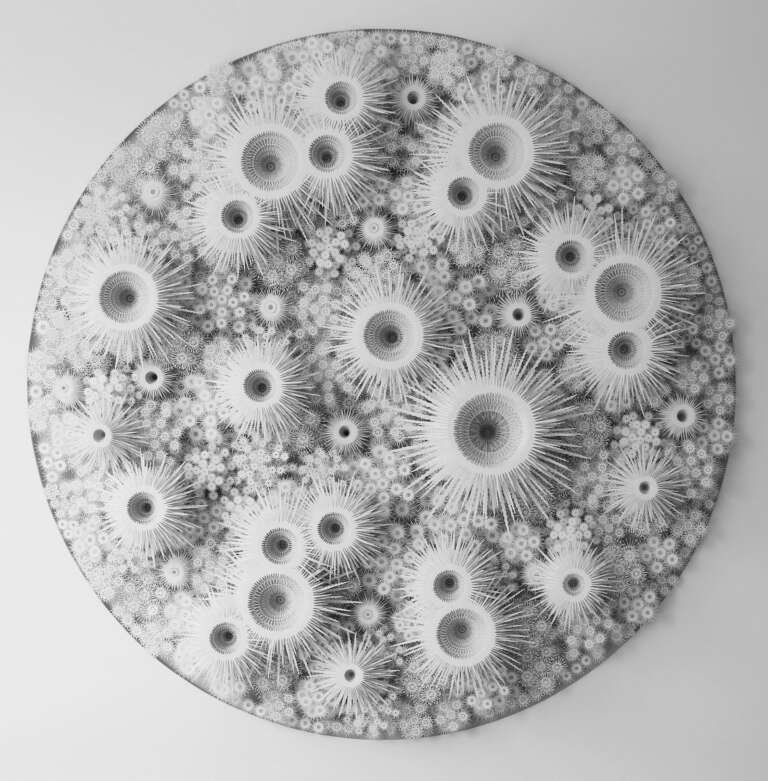
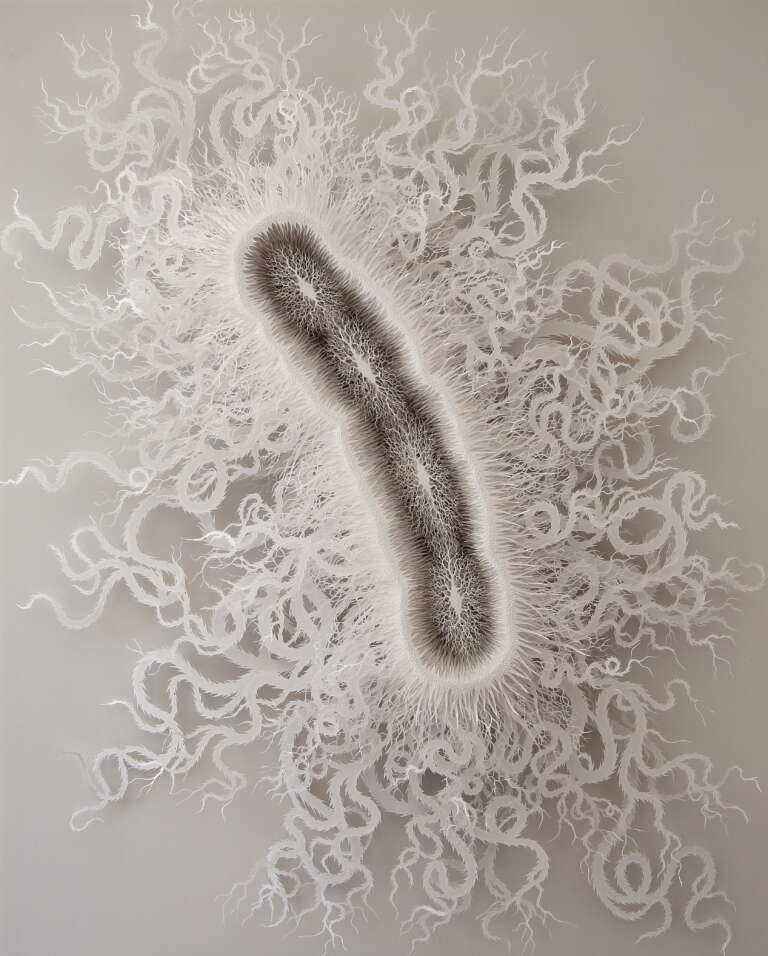

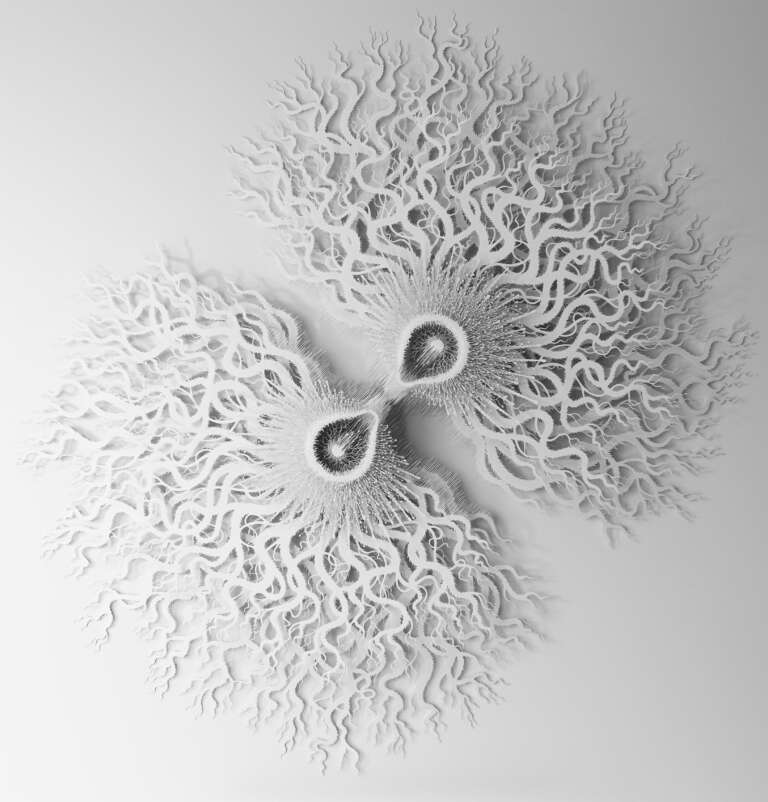
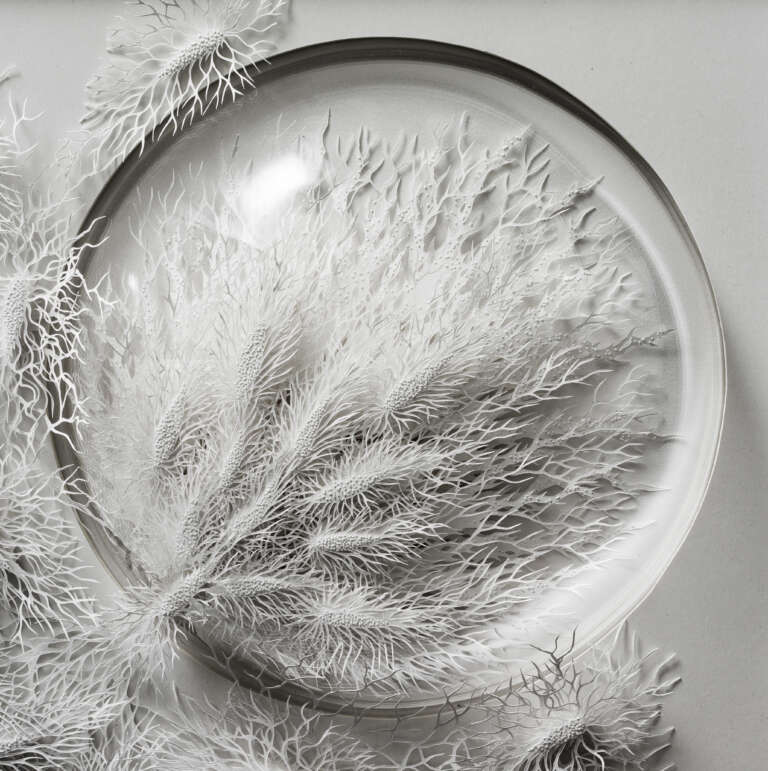

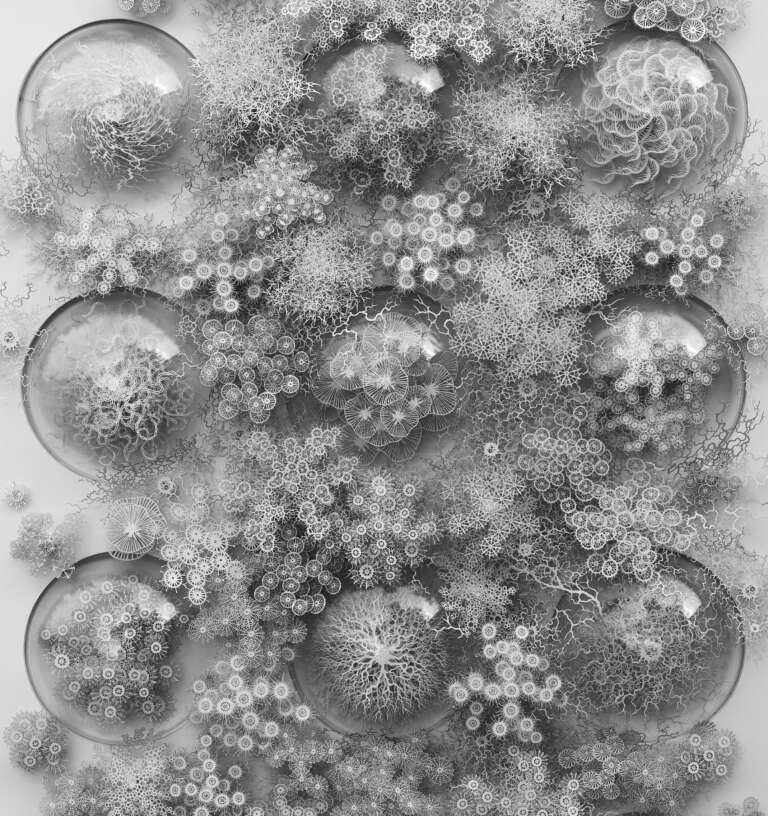
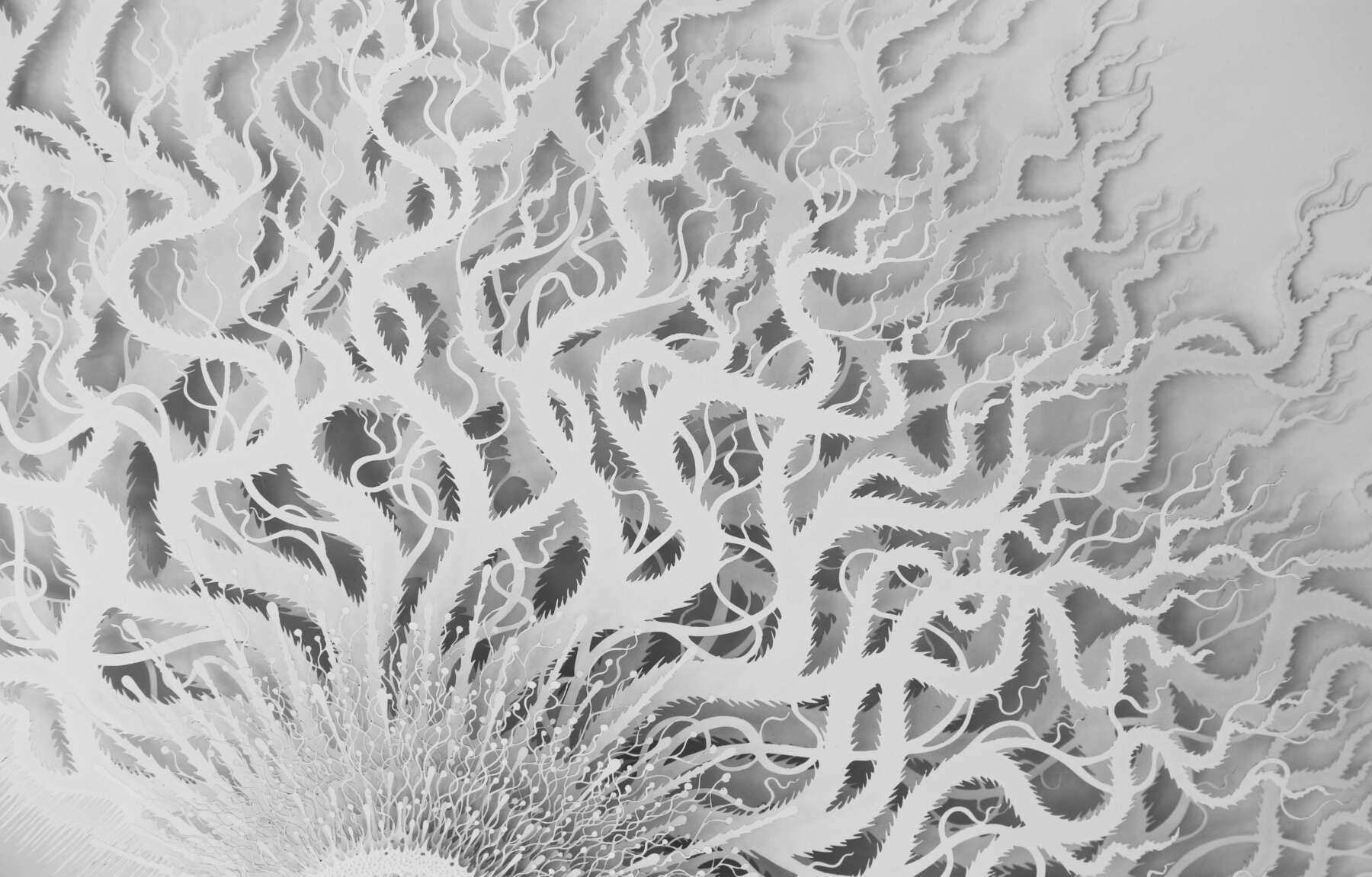

*All images and information is © Rogan Brown unless otherwise stated.
Disclaimer: The views and opinions expressed in this interview are those of the interviewees and do not necessarily reflect the views or positions of Public Health Landscape or Valent BioSciences, LLC.
